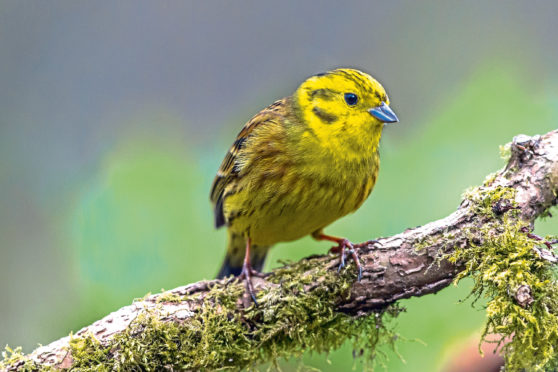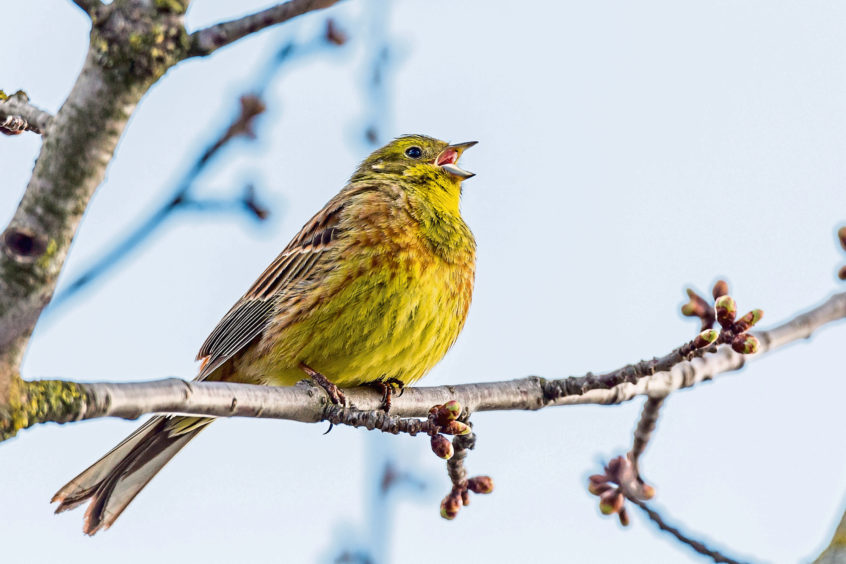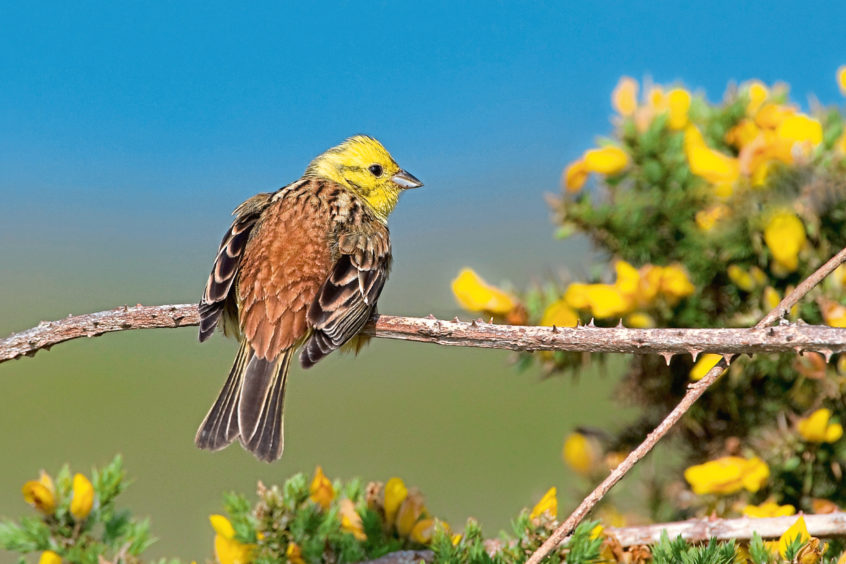The yellowhammer is a member of the bunting family. In winter, they congregate in flocks, often with other seed-eaters such as chaffinches and tree sparrows.
A golden flickering in the beech hedge by this Clackmannanshire farm track, and up flutters a male yellowhammer onto a telegraph wire above, his vibrant citron head catching the morning sun.
I quickly bring this handsome bird into focus through my binoculars to admire his striking colours. The poet John Clare so aptly described the plumage as being ‘with yellow breast and head of solid gold’, but he could easily have gone further, perhaps waxing lyrical about the wonderful russet rump and the distinctive pale-edged tail feathers.
But it is not just the plumage that shines out, for this is a bird that loves to sing, usually from a prominent perch. It was still slightly too early in the season for this male to utter any notes, but once he does so, then the song is like a comfort blanket spreading across our fields and hedgerows.
Popularly described as sounding like ‘a little bit of bread and no cheese’ – the song comprises six or seven quick musical chirps followed by a longer undulating final note. Unlike most other birds that have a relatively brief singing period lasting only weeks, the song of the yellowhammer rings out right through until the end of summer.
In Scotland, the yellowhammer was once known as the ‘yorlin’ and indeed was given erotic connotations in Robert Burns’ rather racy poem ‘The yellow yorlin’.
Curiously for such a benign and beautiful bird, the yellowhammer in times past was associated with the Devil and was persecuted in parts of Scotland, with youths seeking out and destroying their nests. One theory for such a bizarre association with Satan was because the pale eggs have scribble-like marks on them, which were thought to signify some kind of mysterious meaning.
I enjoyed encountering this yellowhammer, not least because they are uncommonly seen nowadays, a victim of agricultural intensification and habitat loss. It soon flits away from the telegraph wire and I move further down the track. The beech hedge framing each side is a treasure trove for other birds; chaffinches, greenfinches and tree sparrows, a place for shelter and nesting, and from whence they can feed on seeds and insects in areas of rough ground nearby.
There was a pleasant warming heat in the sun, a good sign for the emerging spring. At the end of the track, I strike up into some thick woodland. A harsh croaking above me, and the circling form of a raven soars just above the tops of some Scots pines. They breed each year in this wood, although their traditional nest is some distance from where I was standing, so I think this bird was just checking me out.
I sit on a tumbled mossy tree trunk and down at my feet the newly emergent leaves of wood rush pattern the woodland floor; the glossy greenness of fresh life signalling a new beginning, a turning of the seasons.












